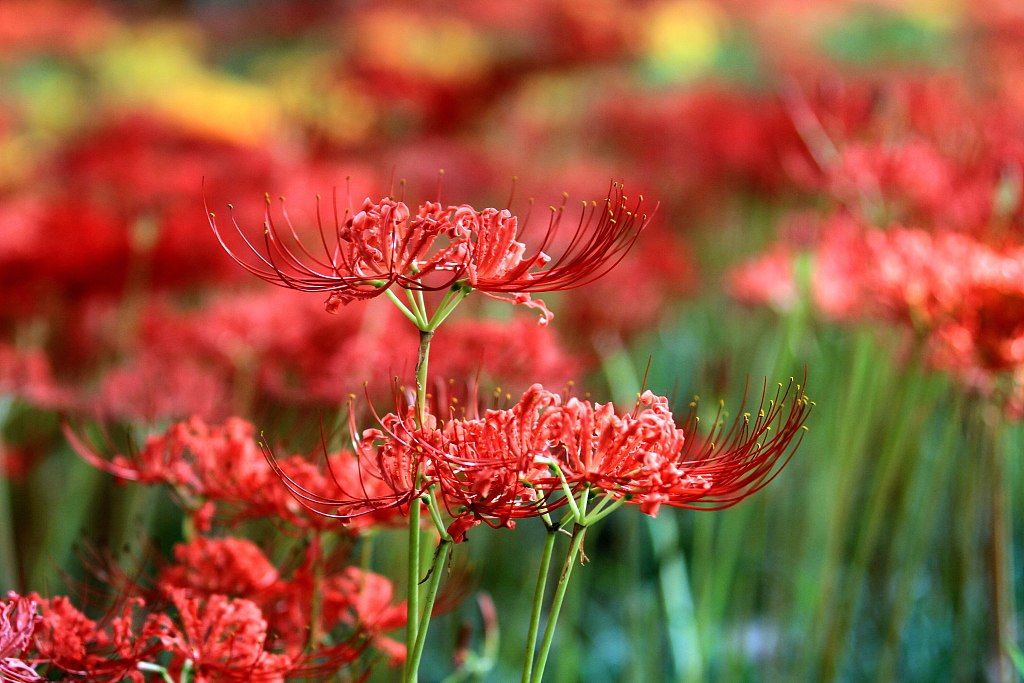
Lycoris flowers are also known as spider lily or phosphorus lily. They belong to the genus Lycoriswhere several species of bulbous plants are found.
This type of plant has a very particular and characteristic shape. The petals of the flowers are long and curved, making their shape resemble the legs of a spider, hence the common name “spider lily”. The flowers are usually tubular (meaning they have an elongated, cylindrical shape, similar to a tube) and can be found in a wide variety of colors, such as red, yellow and white. Having a tall stem and growing in large groups, these flowers create a stunning visual spectacle when they bloom.
Lycoris leaves usually appear after the flowers have bloomed and are generally long and narrow. In some species the leaves may be bright green, while in others they may be a paler colour.
Although plants can vary in height, they generally reach between 30 cm and 60 cm. The flowers, in particular, can be between 5 cm and 10 cm wide.
It usually blooms in summer or early autumn, depending on the species and climatic conditions. In the northern hemisphere, flowering can occur between late August and October. In general, flowering usually occurs in groups, creating a stunning and beautiful visual display of colours and shapes in the gardens and scenic areas where they are planted.
Lycoris flowers are grown primarily for their ornamental value. They are popular in gardening and landscaping because of their striking appearance and because they provide vibrant color at times of the year when other plants may not be flowering.
Some species of lycoris have traditional uses in Chinese medicine. Lycoris bulbs, for example, have been used in traditional medicine to treat various conditions, although their use should be supervised by a professional due to possible side effects. Compounds in the bulbs may have anti-inflammatory and analgesic properties.

In Chinese culture, these flowers symbolize separation and sadness. They are also known as “farewell flowers” and are associated with nostalgia and mourning, especially due to their flowering in autumn, a time that, in Chinese culture, is associated with the end of the seasons and cycles of life.
They can be found at festivals and cultural events in China and other Asian countries. For example, in Japan, these flowers are known as “higanbana” and are especially popular during the autumn equinox, when they bloom in large numbers.
Lycoris flowers have also been depicted in Asian art and literature for centuries due to their unique beauty and symbolism, which has inspired poets, painters and writers throughout history.
Source: https://reporteasia.com/cultura/2024/09/01/belleza-flores-lycoris-china/

